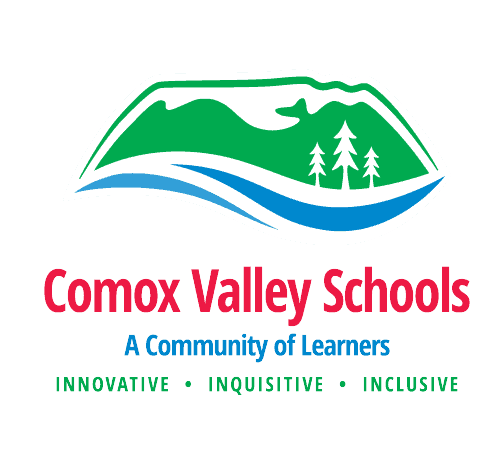Kumugwe Big House Experience
Land Acknowledgement and Honouring Territory
Acknowledging territory is a way of honouring and showing respect for the group of people now known as the K’ómoks First Nation who have been living and working on this land from time immemorial. It is important to acknowledge territory when you to begin your lessons in a good way. Useful tips and explanation of difference between a welcome and an acknowledgement.
Purpose
Indigenous Education has create this webpage with information that has been collaborated on with Kumugwe Cultural Society. We continue to work in relationship with the Kumugwe Cultural Society to provide authentic information. This webpage will help you and your class get ready for the Kumugwe Big House Experience. We have included many resources that will help you with your teaching before the experience. We have also added some possible connections to extend learning beyond the day.
SD71 Indigenous Education co-hosts the Kumugwe Big House Experience
Indigenous Education is once again hosting the annual Big House Experience in partnership with Kumugwe Cultural Society. This year Grade 4 teachers and their classes are invited to attend this unique event. Please see the poster for more details about the day and the letter explaining how to prepare for your class for their visit to the Big House.
Big House Experience Poster May 16 2024 coming soon
Preparation for Kumugwe Big House Experience
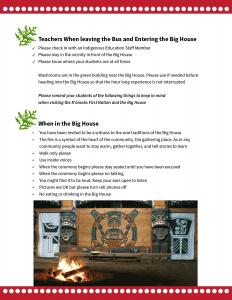
See the video for excerpts and explanation of the actual day:
Video created by Kumugwe Cultural Society in partnership with SD71 Indigenous Education
Please watch Kumugwe Big House Video with your class before your visit to the Big House.
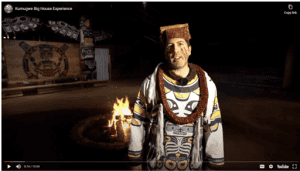
Kumugwe Cultural Society hosts the Grade 4’s in the Big House
“The purpose of the Kumugwe Cultural Society is to represent the K’omoks and Kwakwaka’wakw Peoples, assisting in cultural community endeavours that develop and promote culture.” (KCS)
The Kumugwe Cultural Society website is rich in information to help prepare students and teachers for their visit to the Big House.
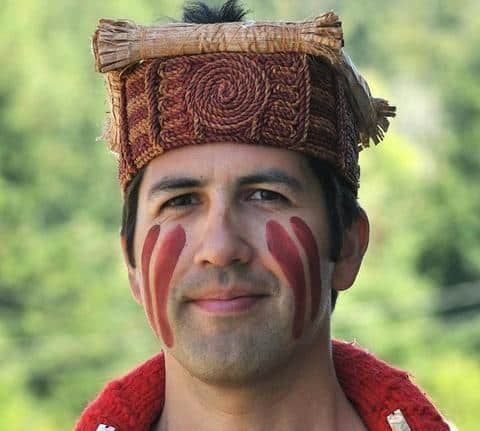
Andy Everson
Andy Everson will be leading us in story and an explanation of the traditions, songs, and dances we will be witnessing.
“Andy Everson was born in Comox, BC in 1972 and named Na̱gedzi after his grandfather, the late Chief Andy Frank of the K’ómoks First Nation. Andy has also had the honour of being seated with the ‘Na̱mg̱is T̓sit̓sa̱ł’walag̱a̱me’ name of Ḵ̓wa̱mxa̱laga̱lis I’nis. Influenced heavily by his grandmother, he has always been driven to uphold the traditions of both the K’ómoks and Kwakwa̱ka̱’wakw First Nations. In this regard, Andy has pursued avenues where he can sing traditional songs and perform ceremonial dances at potlatches and in a number of different dance groups, most notably the Le-La-La Dancers, the Gwa’wina Dancers and the K’umugwe Dancers.” Andy Everson
Meet a Local Legend: The Kumugwe Dancers
“Meet 13-year old Jessie Everson in the next episode of our ‘Meet a Local Legend’ video series. Although he describes himself as an ordinary kid who swims and plays soccer, Jessie is staying connected with the history and traditions of his people through the K’umugwe Dancers.” (Indigenous Tourism)
For more details and background you can read the full blog post
Big House
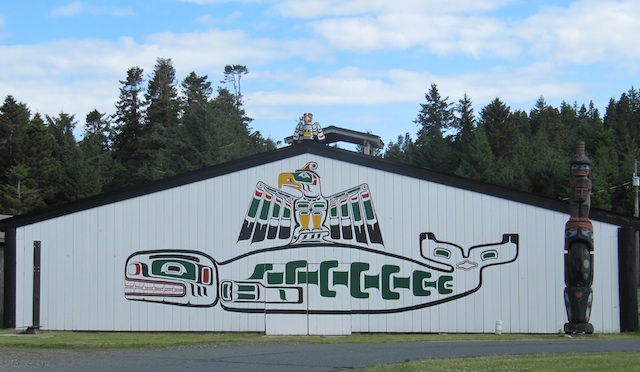
Explanation of the Kumugwe Big House, by the Kumugwe Cultural Society
“Kumugwe, the Bighouse on the traditional territory of the K’omoks First Nation and the Vancouver Island community gather to celebrate, mourn, learn and to be entertained.”
Explanation of importance of Big Houses and their construction: narrated by Andy Everson
Connections and Purpose
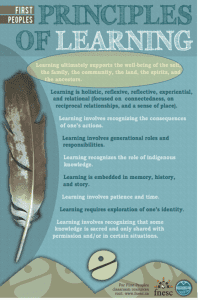
Connecting the Big House Experience and the learning to the FPPL:
The Kumugwe Cultural Society will model and explain their deep connection to their ancestral teachings and how that informs and supports their own learning, their families, the community, the land, the spirits and the ancestors. How can we as guests on this territory, think about relationship to this land and the many generations of ancestral teaching that have existed here?
For teachers to learn more about the First Peoples Principles of Learning, Jo Chrona goes into more depth about how to teach with the FPPL in mind on her blog, First Peoples Principles of Learning.
“Learning ultimately supports the well-being of the self, the family, the community, the land, the spirits, and the ancestors
This principle refers to the understanding that ultimately, the primary purpose of learning is for well-being…
…The relationship to land and place is deeply rooted in First Peoples’ cultural perspectives; living and learning is inextricably tied to sense of place, and connection to the land itself. Traditionally, in addition to the learner’s family and community, the place in which they live, and the land that supports that life, provide the context and source for teaching and learning. The community and natural environment are regarded as the “classroom”.”
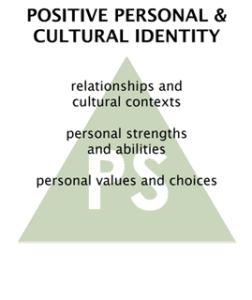 |
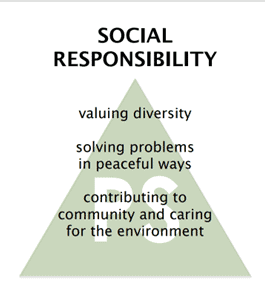 |
Possible Explorations and Pathways to Further Learning
After previewing the information above, we invite you to to explore the K’ómoks First Nation Website with your class to find out more about the K’ómoks people prior to visiting the Kumugwe Big House.
Potlatch Information
Living Tradition: The Kwakwaka’wakw Potlatch on the Northwest Coast
“The English translation of Potlatch means to give. Many people believe that a rich and powerful person is someone who has a lot. The people who speak Kwak´wala, the Kwakwaka‘wakw, believe that a rich and powerful person is someone who gives the most away. Since a time beyond memory, the Kwakwaka‘wakw have been hosting potlatches and potlatching continues to play a central and unifying role in community life today.” umistapotlatch.ca
Potlatch 67/67 Indigenous Art installation at Comox Valley Art Gallery
“2018 marks the 67th year since the Canadian government’s Potlatch Ban was lifted, after it was imposed on First Nations for 67 years. Hereditary Chief Rob Everson of the Gigalgam Walas Kwaguɫ, recognizing that many Canadians do not understand the history of Indigenous peoples, envisioned an arts and cultural program that would powerfully engage the local community and fellow Canadians, both Indigenous and settler, about this history and the impact.”
Secret of the Dance, by Andrea Spalding and Alfred Scow
“In 1935, a nine-year-old boy’s family held a forbidden Potlatch in faraway Kingcome Inlet. Watl’kina slipped from his bed to bear witness. In the Big House masked figures danced by firelight to the beat of the drum. And there, he saw a figure he knew. Aboriginal elder Alfred Scow and award-winning author Andrea Spalding collaborate to tell the story, to tell the secret of the dance.”
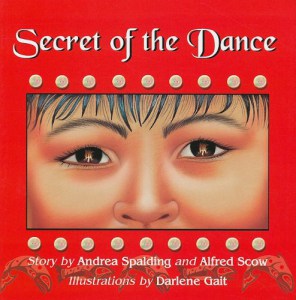
Story by Andrea Spalding and Alfred Scow In 1935, a nine-year-old boy’s family held a forbidden Potlatch in faraway Kingcome Inlet. Watl’kina slipped from his bed to bear witness.
Legend of Queneesh

Comox Glacier 2023 |
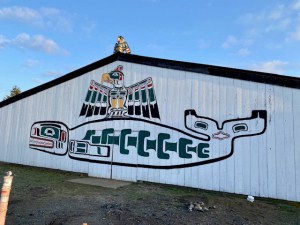
Kumugwe Big House with Queneesh Whale on front. |
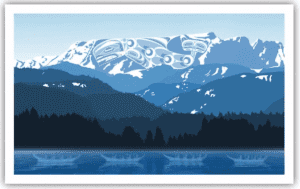
Heritage by Andy Everson“Overlooking the Comox Valley, sits the majestic Comox Glacier. For residents of the Valley, the glacier is a symbol of our community and one of the physical features that make our area so beautiful. Recent reports have made it evident that the glacier is disappearing at an alarming rate and will likely be gone within my lifetime. The glacier is an important part of our community’s heritage.” from: andyeverson.com |

